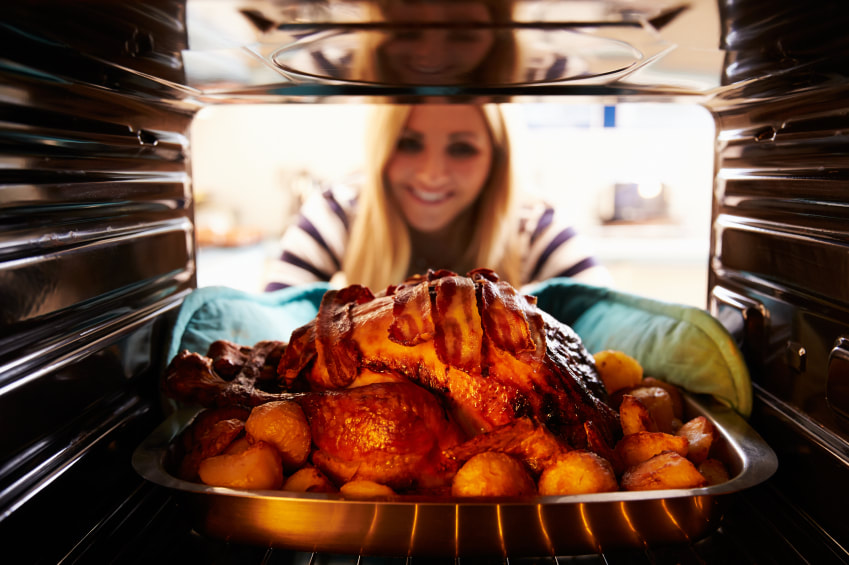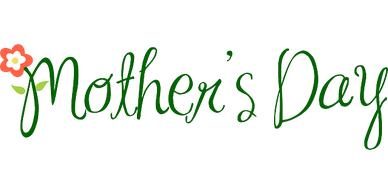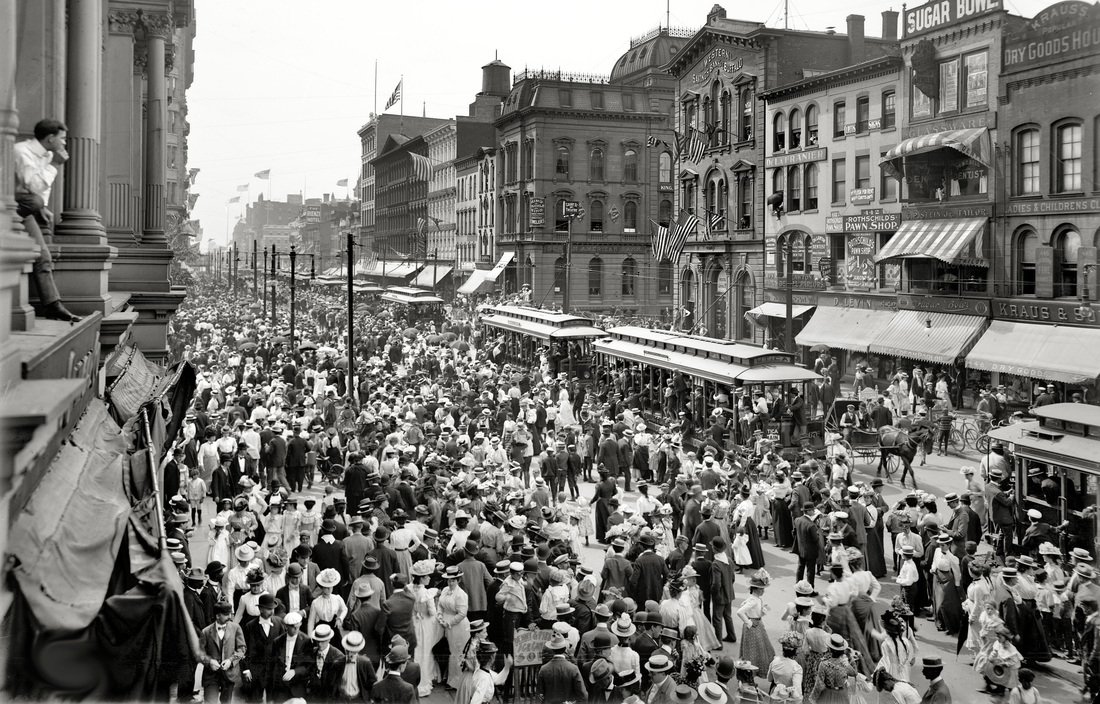On behalf of all of us at United Field Chase, we thank you all and wish you a very happy Thanksgiving holiday from our Family to Yours!
|
Thanksgiving is about so much more than food and football. It’s a time to reflect and show gratitude. As we prepare for the Thanksgiving holiday this week, we’d like to share a special message of thanks. We’re thankful for our amazing team who live our mission and their dedication and compassion is inspiring. Our business partners, clients, and field agents are a key component to our company’s success. We appreciate the strong relationships we’ve built with them over the years. We acknowledge and give thanks for their collaboration and hard work.
On behalf of all of us at United Field Chase, we thank you all and wish you a very happy Thanksgiving holiday from our Family to Yours!
0 Comments
The wheel of "It's your turn to host Thanksgiving" was spun and the arrow stopped on you. Check out this list and you will be smiling all day; with no stress, no worries, just holiday spirit, laughter among loved ones and plenty of delicious food. 3 Weeks Ahead
2 Weeks Ahead
*Turkey Tips If you're buying a frozen turkey, get it now (if you have the freezer space). If going the fresh route, place your order with a local butcher or turkey producer. Allow 3/4 pound per person for a whole turkey and 1/2 a pound per person for a turkey breast. Don't buy turkeys larger than 15 pounds. The bigger they are, the older they are. As we all know, when we get old, we get touch and mean! 1 Week Ahead Thaw the turkey if frozen. Make sure there's room for it to thaw in the refrigerator. Use a large pan to catch any juices that might escape as it thaws. Allow 1 day of thaw time for every 4 pounds of bird. For example, a 12-pound bird will need 3 days to thaw. 5 Days Ahead Get the family involved in planning "use it up meals" to clear space in the refrigerator for the next few nights. 3 Days Ahead
2 Days Ahead
1 Day Ahead
Step-by-Step Guide to a Stress-Free Thanksgiving Day
Mother's Day in the United States is annually held on the second Sunday of May. It celebrates motherhood and it is a time to appreciate mothers and mother figures. Many people give gifts, cards, flowers, candy, a meal in a restaurant or other treats to their mother and mother figures, including grandmothers, great-grandmothers, stepmothers, and foster mothers. What Do People Do? Many people send cards or gifts to their mother or mother figure or make a special effort to visit her. Common Mother's Day gifts are flowers, chocolate, candy, clothing, jewelry and treats, such as a beauty treatment or trip to a spa. Some families organize an outing for all of their members or hold a special meal at home or in a restaurant. In the days and weeks before Mother's Day, many schools help their pupils to prepare a handmade card or small gift for their mothers. Background The origins of Mother's Day are attributed to different people. Many believe that two women, Julia Ward Howe and Anna Jarvis were important in establishing the tradition of Mother's Day in the United States. Other sources say that Juliet Calhoun Blakely initiated Mother’s Day in Albion, Michigan, in the late 1800s. Her sons paid tribute to her each year and urged others to honor their mothers. Around 1870, Julia Ward Howe called for Mother's Day to be celebrated each year to encourage pacifism and disarmament amongst women. It continued to be held in Boston for about ten years under her sponsorship, but died out after that. In 1907, Anna Jarvis held a private Mother's Day celebration in memory of her mother, Ann Jarvis, in Grafton, West Virginia. Ann Jarvis had organized "Mother's Day Work Clubs" to improve health and cleanliness in the area where she lived. Anna Jarvis launched a quest for Mother's Day to be more widely recognized. Her campaign was later financially supported by John Wanamaker, a clothing merchant from Philadelphia. In 1908, she was instrumental in arranging a service in the Andrew's Methodist Episcopal Church in Grafton, West Virginia, which was attended by 407 children and their mothers. The church has now become the International Mother's Day Shrine. It is a tribute to all mothers and has been designated as a National Historic Landmark. Mother's Day has become a day that focuses on generally recognizing mothers' and mother figures' roles. Mother's Day has also become an increasingly important event for businesses in recent years. This is particularly true of restaurants and businesses manufacturing and selling cards and gift items. To all the Mothers out there, thank you for all that you do! Happy Mother's Day! Hint: If you are in the market in getting your mom something thoughtful, check out our pick for 35+ Super Thoughtful Mother's Day Gift Ideas!
All of us at United Field Chase would like to wish you and your family all the best during this holiday.
In an age of electronics and social media, it’s an opportunity for face to face conversations and the bond it creates. It’s a chance for backyard football games and the favorite board games that bring out rivalries and competitiveness in every generation. But most importantly, Thanksgiving is about being thankful for what we have, the people in our lives, making it through another year and for everyone that is still with us. And for those who have left us, it’s a moment to be grateful for the time we had with them, the wonderful lives they led and the legacy they’ve left behind. Have a Happy Thanksgiving! Halloween is October 31st, a time for fun with friends, family, and neighbors with children trick-or-treating door-to-door. Most people are friendly and nice but there are some who play cruel tricks on children and ruin the good time.
You can help make the evening of Halloween a safer event for everyone. Even those who do not take part in the event can help by watching out for trick-or-treaters. Parents should bear in mind that "fake" weapons such as guns, knives, and swords should be of materials that are, smooth, soft, and flexible to prevent injuries. Props for children that actually look like a real weapon should be avoided completely. Safety Tips for Trick-or-Treaters: Be part of a group and do not stray from the group, there is safety in numbers. Do not enter the home of a stranger. Never accept rides from strangers. Look both ways before crossing the street and cross when the pedestrian crosswalk light signals you to walk. Carry flash lights so you can be easily seen. Do not take shortcuts through backyards, parks, or alleys. Be alert, have fun but do not let your guard down. Safety Tips for the House: Keep a porch light on so trick-or-treaters will know to visit and can see where they are walking. Remove yard clutter that trick-or-treaters may trip over. Secure your pets to protect both the visitors and your pets. Use battery powered Jack-O-Lanterns instead of ones with candles. If you do use candles, make sure they are far enough out of the way so that kids' costumes won't accidentally be set on fire. Avoid giving homemade treats. Responsible parents do not allow their children to eat them unless they know the person making them. Safety Tips for Parents: Young children should be accompanied by an adult. Kids always want to help with pumpkin carving. Small children should not be allowed to use a sharp knife to cut the top or the face. There are many kits available that come with tiny saws that work better than knives and they are also safer. Although, you can be cut by these small saws as well. It is best to let the kids clean out the pumpkin and draw a face on the front, which you can carve for them. Check your child's candy before they consume it. Anything suspicious should be discarded! Feed your children before they set out. This should help discourage them from trying their treats before you are able to check them. Know where your child is and whom they are with. Buy flame retardant costumes and consider using make-up rather than masks. A mask may obscure your child's vision. Costumes should be light in color or have reflective tape put on them. Costumes should be made from light materials to avoid dehydration and other heat related issues. Party Goers: Arrange a safe ride home and/or designate a driver before partaking in any festivities. Always designate a sober driver. If you are drunk, take a taxi, call a sober friend or family member, or use public transportation. Before leaving for a party, put numbers of local cab companies and your designated driver(s) into your phone. Walking impaired can be as dangerous as drunk driving. Designate a sober friend to walk you home. If you see a drunk driver on the road, contact local law enforcement. If you know someone who is about to drive or ride impaired, take their keys and help them make safe travel arrangements to where they are going. Make Halloween a fun, safe, and happy time for your kids and they will carry on the tradition that you taught them to their own families some day! Kids love Halloween! They get to dress up and get free candy! What a perfect holiday, give your kids some precious Halloween memories that they will have for life. Trick-or-treating is not what it use to be. It is not as safe to let kids walk the streets alone. Send a responsible adult or older teenager with them. Have a pumpkin carving party for your children and their friends a couple nights before Halloween. They will enjoy looking at their creations for a few days before they have to be thrown out. Check your local grocery store or craft store for Halloween cookbooks full of tasty treats on a horror theme for both kids and adults. Halloween safety tips provided by City of Tampa, Florida. Labor Day Parade in 1899 in Buffalo, New York Here's what you need to know about one of America's most important holidays.
The first Monday of September means that white clothes are out, sales are in, summer holidays are over and classes begin. For many of us (but far from all of us), it’s a welcome day off of work or school, ahead of what is likely to be a busier month than the last. But the Labor Day holiday has a storied past, one of violence and celebration, that’s embedded deep in the history of the American labor movement. And while it has spread around the world in different forms, Labor Day has distinctly American roots. Here’s a quick primer on the meaning and history of the holiday. When did Labor Day begin? The modern holiday is widely traced back to an organized parade in New York City in 1882. Union leaders had called for what they had labelled a “monster labor festival” on Tuesday, Sept. 5, according to Linda Stinson, a former historian for the Department of Labor (the idea for a general labor festival may have originated in Canada, which today also celebrates “Labour Day” on the first Monday in September). Initially that morning, few people showed up, and organizers worried that workers had been reluctant to surrender a day’s pay to join the rally. But soon the crowds began flowing in from across the city, and by the end of the day some 10,000 people had marched in the parade and joined festivities afterward in what the press dubbed “a day of the people.” When did it become an official holiday? The practice of holding annual festivities to celebrate workers spread across the country, but Labor Day didn’t become a national holiday for more than a decade. Oregon became the first state to declare it a holiday in 1887, and states like New York, Massachusetts and Colorado soon followed suit. Under President Grover Cleveland, and amid growing awareness of the labor movement, the first Monday in September became a national holiday in 1896. Why is it on the first Monday in September anyway? Labor union leaders had pushed for a September date for the New York demonstration, which coincided with a conference in the city of the Knights of Labor, one of the largest and most influential of the unions. The first two New York City Labor Days took place on the 5th of September, but in 1884, the third annual New York City Labor Day holiday was scheduled for the first Monday in September, and that date stuck. The September rally would soon clash with International Worker’s Day on May 1, which arose out of what is known as the Haymarket Affair. On May 4, 1886, protesters in Chicago gathered to demand an 8-hour workday. Toward the end of the day, a peaceful demonstration devolved into violence when a bomb was hurled toward the police, killing one officer instantly and injuring others. The police responded by firing into the crowd, killing a still undetermined number of people. The incident enraged labor activists but also fueled fears in America that the labor movement had become radicalized, prompting a crackdown on labors groups: the bomb thrower was never identified, but four people were hanged for their alleged involvement. In the wake of the Haymarket Affair, Union leaders and socialists declared May 1 as International Workers’ Day, and the day was and continues to be unofficially observed in the U.S. It’s also that date that most other countries officially or unofficially observe as a holiday in honor of workers. But when President Grover Cleveland moved to create a national labor holiday, he chose to avoid the thorny history of that May date. So what’s the difference between Labor Day and May Day (International Workers’ Day) in the U.S.? Jonathan Cutler, associate professor of sociology at Wesleyan, described Labor Day as a “government alternative” to May Day in an informative interview with NPR about the Haymarket Affair. May Day may have helped promote the creation of a national holiday, but Labor Day is associated with a different significance. “May Day has always been linked to the demand for less work and more pay; Labor Day celebrates the ‘dignity’ of work,” Cutler said in the interview. We have Monday off, but does the labor community still actually celebrate the holiday? Yep. To this day there is still a major parade in New York City (and other cities across the country, large and small), and the #UnionStrong will probably make a big showing on Twitter. It’s true that union membership has been declining for years, but many of the challenges that faced workers more than a century ago are still being overcome today, whether by the growing movement for higher wages in the fast food industry or by overworked tech and finance employees calling for better hours. “If there is anyone who needs to attend to the spirit of Haymarket, it is the American white-collar professional who works 10 hour days, including many weekends, and who has fewer paid vacation days than other white-collar professionals around the world,” Cutler said in the interview with NPR. So, are white clothes really out? Yes and no. Source: time.com |
|









